April 29, 1862: Union troops took possession of New Orleans, completing the occupation that had begun four days earlier. Union Admiral David Farragut told Confederate General Mansfield Lovell that if he resisted, the Union would bombard the city and inflict severe damage and casualties. Lovell surveyed his tiny force and realized that resistance was futile. Crowds cursed the Yankees as all Confederate flags in the city were lowered and stars and stripes were raised in their place.
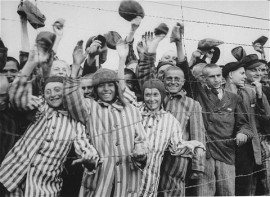
April 29, 1945: The U.S. Seventh Army’s 45th Infantry Division liberated Dachau, the first concentration camp established by Germany’s Nazi regime. A major Dachau subcamp was liberated the same day by the 42nd Rainbow Division.
Established five weeks after Adolf Hitler took power as German chancellor in 1933, Dachau was situated on the outskirts of the town of Dachau, about 10 miles northwest of Munich. During its first year, the camp held about 5,000 political prisoners, consisting primarily of German communists, Social Democrats, and other political opponents of the Nazi regime. During the next few years, the number of prisoners grew dramatically, and other groups were interned at Dachau, including Jehovah’s Witnesses, Gypsies, homosexuals, and repeat criminals. Beginning in 1938, Jews began to comprise a major portion of camp internees.
The camp served as the training center for SS concentration camp guards and was a model for other Nazi camps. Nazi scientists tested the effects of freezing and changes to atmospheric pressure on inmates, infected them with malaria and tuberculosis and treated them with experimental drugs, and forced them to test methods of making seawater potable and of halting excessive bleeding. Hundreds of prisoners died or were crippled as a result of these experiments.
Americans found more than 30 railroad cars filled with bodies in various states of decomposition. Inside the camp there were more bodies and 30,000 survivors, most severely emaciated.
Some of the American troops who liberated Dachau were so appalled by conditions at the camp that they machine-gunned at least two groups of captured German guards. It is officially reported that 30 SS guards were killed in this fashion, although unconfirmed accounts listed the number as closer to 500. The German citizens of the town of Dachau were later forced to bury the 9,000 dead inmates found at the camp.
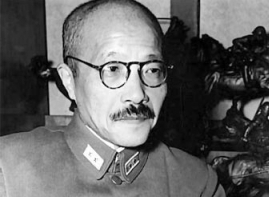
April 29, 1946: Hideki Tojo, wartime premier of Japan, was indicted by the International Military Tribunal for the Far East of war crimes. In September 1945, he tried to commit suicide by shooting himself but was saved by an American physician. He was eventually hanged by the Americans in 1948 after having been found guilty of war crimes.
April 29, 1950: In response to Senator Joseph McCarthy’s charge that former State Department consultant and university professor Owen Lattimore was a top Soviet spy in the United States, Secretary of State Dean Acheson and three former secretaries of state denied that Lattimore had any influence on U.S. foreign policy. The Lattimore case was one of the most famous episodes of the “red scare” in the United States.
Two months earlier, Senator McCarthy had delivered a speech in which he charged that there were over 200 “known communists” in the Department of State. McCarthy was asked to appear before a subcommittee of the Senate Foreign Relations Committee to provide details about his accusation. During the course of the hearing, the senator charged that Owen Lattimore was a top spy for the Soviet Union and had been “the principal architect of our Far Eastern policy.” The implication of McCarthy’s testimony was clear: Lattimore, acting as a virtual Soviet agent, had helped design a policy that resulted in the loss of China to the communists in 1949.
April 29, 1974: President Richard Nixon announced that he would release transcripts of 46 taped White House conversations in response to a Watergate trial subpoena issued in July 1973. The House Judiciary committee accepted 1,200 pages of transcripts the next day, but insisted that the tapes themselves be turned over as well.
Three months later, the Supreme Court rejected Nixon’s claim of executive privilege and ordered him to turn over the remaining tapes. On one of them, the president could be heard ordering the FBI to end its investigation of the Watergate break-in; this came to be known as the “smoking gun” that proved Nixon’s guilt.
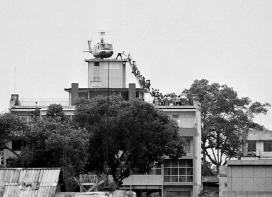
April 29, 1975: Operation Frequent Wind, the largest helicopter evacuation on record, began removing the last Americans from Saigon.
The North Vietnamese had launched their final offensive in March 1975 and the South Vietnamese forces had fallen back before their rapid advance. With the North Vietnamese attacking the outskirts of Saigon, U.S. Ambassador Graham Martin ordered the commencement of Frequent Wind.
In 19 hours, 81 helicopters carried more than 1,000 Americans and almost 6,000 Vietnamese to aircraft carriers offshore. Cpl. Charles McMahon, Jr. and Lance Cpl. Darwin Judge, USMC, were the last U.S. military personnel killed in action in Vietnam, when shrapnel from a North Vietnamese rocket struck them as they were guarding Tan Son Nhut Airbase during the evacuation. At 7:53 a.m. on April 30, the last helicopter lifted off the rook of the embassy and headed out to sea. Later that morning, North Vietnamese tanks crashed through the gates of the Presidential Palace. North Vietnamese Col. Bui Tin accepted the surrender from Gen. Duong Van Minh, who had taken over from Tran Van Huong (who only spent one day in power after President Nguyen Van Thieu fled).
The Vietnam War was over.
April 21, 1991: A devastating cyclone hit Bangladesh, killing more than 135,000 people. Even though there had been ample warning of the coming storm and shelter provisions had been built in the aftermath of a deadly 1970 storm – in which nearly half a million people lost their lives – the 1991 disaster was one of the worst of the 20th century.
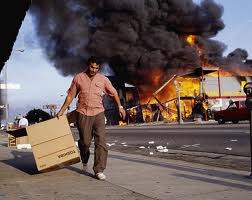
April 29, 1992: A jury of 10 whites, one Hispanic, and one Filipina in the Los Angeles suburb of Simi Valley acquitted four police officers who had been charged with using excessive force in arresting black motorist Rodney King a year earlier. The announcement of the verdict, which enraged the black community, prompted widespread rioting throughout much of the sprawling city. Over the next three days, 53 people were killed and hundreds of buildings are destroyed.
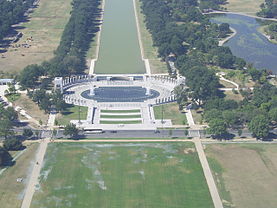
April 29, 2004: The National World War II Memorial opened in Washington, D.C., to thousands of visitors, providing overdue recognition for the 16 million U.S. men and women who served in the war.
Though the federal government donated $16 million to the memorial fund, it took more than $164 million in private donations to get it built. Only a fraction of the 16 million Americans who served in the war would ever see it. Four million World War II veterans were living at the time, with more than 1,100 dying every day, according to government records.
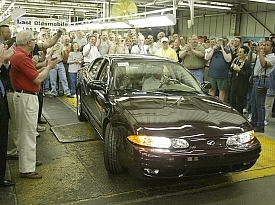
April 29, 2004: The last Oldsmobile came off the assembly line at the Lansing Car Assembly plant in Michigan, signaling the end of the 106-year-old automotive brand, America’s oldest. Factory workers signed the last Oldsmobile, an Alero sedan, before the vehicle was moved to Lansing’s R.E. Olds Transportation Museum, where it went on display.